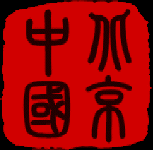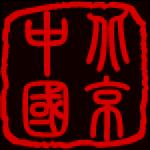 |
Chinese Culture Ancient Cultural Ideas |
 |
 |
Chinese Culture Ancient Cultural Ideas |
 |
Note : this section will be expanded over the coming months.
Other Ancient Cultural AspectsDragon and PheonixThe dragon and the phoenix, mythical creatures that date back into antiquity and only gradually took the form we know today, served in classical art and literature as symbolic of people of high virtue and rare talent. Together, the two symbolize happiness and married love. The dragon symbolizes supreme power and was associated with the emperor. There is no connection with the Western dragon which symbolizes evil power. The first emperor, Shi HuangDi, is said to have incorporated the emblem or totem of each tribe he conquered into his own. This may be part of the explanation of how the dragon took on its composite form. A dragon has the body of a snake, the scales and tail of a fish, the antlers of a stag, the face of a camel, the talons of an eagle, the ears of a bull, the feet of a tiger and the eyes of a demon. The dragon is associated with water and the number 9. Han chinese often refer to themselves as 'descendants of the dragon'. In the West, it has also become a symbol of China itself although in China the panda is the preferred national symbol today. The Pheonix (FengHuang) symbolizes virtue, foresight and devotion and was associated with the empress. The pheonix derived from the combination of the first two mythical pheonixes - the Feng which was male and Huang that was female - to symbolize a harmony of Yin and Yang. The pheonix carries with it eternal truths and is immortal - able to rise from the ashes of death. The pheonixwill only stay where there is just rule. The feathers of the pheonix are often depicted containing the five fundamental colors: black/blue, white, red, green and yellow that relate to the 'Five Elements'. The pheonix or similar mythical 'firebirds' appear in many ancient cultures, including that of ancient Greece, but there are some differences. The dragon and pheonix are still embodied in traditional celebrations such as the Chinese New Year. NumbersThe number 9, being the highest value digit, is associated with the dragon and the emperor. Nine is often found in architectural and other features associated with the emperor, such as the imperial red doors with their 9 rows of 9 golden bolts. 10,000 was a number used to denote infinity. Hence the Forbidden City was often cited as having 9,999 rooms - just less than the mythical number of rooms in Heaven. Further, odd numbers are considered to be Yang while even numbers are associated with Yin. All the other digits have various associations too, with complicated rationales based in various ancient beliefs such as the Five Elements. Even today, 8 is considered to be a lucky number associated with prosperity and happiness, while 4 is an unlucky number. In some multi-soried buildings there is no floor marked as floor 4. A telephone number with lots of 8s and no 4s is the most expensive. |
Share this page
|
China Travel and Culture Videos Home